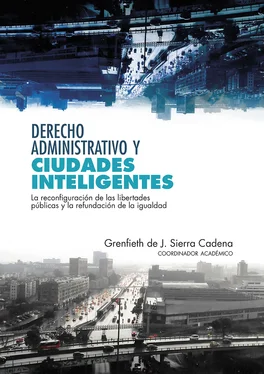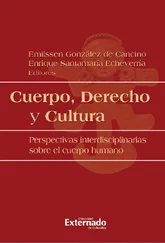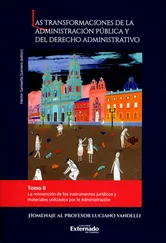Se prevé que este aumento se producirá de forma desigual en términos geográficos y que, además, algunas de las urbes que actualmente presentan un mayor tamaño podría ver reducido su número de habitantes.
‘La urbanización va a continuar y lo va a hacer más rápido en los países de ingresos bajos y medios’, señala Lina Bassarsky, oficial de asuntos de población.
Distribución del proceso.
La población urbana ha aumentado de manera exponencial —desde 751 millones en 1950 a 4200 millones en 2018— y continuará con esta tendencia. Según el informe, el crecimiento previsto estará altamente concentrado: el 90 % tendrá lugar en los países de África y Asia, y tan solo India, China y Nigeria representarán el 35 % con 416 millones, 255 millones y 189 millones de habitantes respectivamente.
Actualmente, las áreas más urbanizadas son: América del Norte: 82 % de población urbana.
América Latina y el Caribe: 81 %. Europa: 74 %. Oceanía: 68 %” ONU (2018).
4“Smart City 1.0 is a municipality that is maximizing the use of advanced technology as a lever for viability, sustainability, and control. These cities are often criticized because of their technology push and the influential role of large corporates, like IBM and CISCO. The predicate Smart City 2.0 is appropriate if technological tools explicitly are designed to cope with problems like pollution, sanitation, health and traffic in consultation with their citizens. Unfortunately, participation of citizens in formal decision-making structures and meetings is flawed and appeals to a small minority only. Meanwhile, a much larger number of citizens is involved in activities like gardening, food processing, improving the attractively of streets and even energy production. These activities, often referred to as commoning or place-making are deploying high-, low- or no-tech solutions. They connect every day collaborative acts with broader goals like social inclusion, democracy, enterprise creation and building social capital. Here, the predicate Smart City 3.0 is in order. This post is about Smart Cities 3.0. ” (Van den Bosch, 2017).
5Ver el documento de la Alcaldía Mayor de Bogotá: Bogotá. Ciudad inteligente. Disponible en https://bogota.gov.co/sites/default/files/inline-files/doc_smartcity.pdf
6Es el reglamento europeo relativo a la protección de las personas físicas en lo que respecta al tratamiento de sus datos personales y a la libre circulación de estos datos (Consejo Europeo y Consejo de la Unión Europea, s. f.).
7 https://www.dnp.gov.co/programas/vivienda-agua-y-desarrollo-urbano/Vivienda/Paginas/Presentaciones-Smart-Cities.aspx
8“The New Concept of Smart Green Cities and Communities”.
9“The Smart Green Communities in the Informational City”.
10“Ville intelligente et libertés, le compromis nécessaire”.
11“El desafío de la movilidad en las ciudades inteligentes”.
12“Reformas al Estatuto de Bogotá para mejorar su diseño institucional”.
13“Gobernanza urbana integrada, un modelo de gestión para centros urbanos de orden metropolitano aplicado al caso de Bogotá D. C.”.
14“Cuando hablamos de Big Data nos referimos a conjuntos de datos o combinaciones de conjuntos de datos cuyo tamaño (volumen), complejidad (variabilidad) y velocidad de crecimiento (velocidad) dificultan su captura, gestión, procesamiento o análisis mediante tecnologías y herramientas convencionales, tales como bases de datos relacionales y estadísticas convencionales o paquetes de visualización, dentro del tiempo necesario para que sean útiles. Aunque el tamaño utilizado para determinar si un conjunto de datos determinado se considera Big Data no está firmemente definido y sigue cambiando con el tiempo, la mayoría de los analistas y profesionales actualmente se refieren a conjuntos de datos que van desde 30-50 Terabytes a varios Petabytes. La naturaleza compleja del Big Data se debe principalmente a la naturaleza no estructurada de gran parte de los datos generados por las tecnologías modernas, como los web logs, la identificación por radiofrecuencia (RFID), los sensores incorporados en dispositivos, la maquinaria, los vehículos, las búsquedas en Internet, las redes sociales como Facebook, computadoras portátiles, teléfonos inteligentes y otros teléfonos móviles, dispositivos GPS y registros de centros de llamadas. En la mayoría de los casos, con el fin de utilizar eficazmente el Big Data, debe combinarse con datos estructurados (normalmente de una base de datos relacional) de una aplicación comercial más convencional, como un ERP (Enterprise Resource Planning) o un CRM (Customer Relationship Management).” (Power Data, s. f.).
15“Smart-cities et principe d’égalité”.
16“Principe d’égalité et villes éco-intelligentes”.
17“El derecho a la accesibilidad a la luz de la igualdad y no discriminación de las personas con discapacidad física en el sistema de transporte público en Bogotá”.
18“Urbanismo y género. El derecho de las mujeres a la ciudad”.
19“Gentrificación, derechos y posibilidades de moradores en proyectos de renovación urbana de iniciativa pública en Bogotá”.
20“Las disparidades de crecimiento económico: instituciones económicas regionales rentistas”.
PRIMER PARTE
LAS RECONFIGURACIONES DE LAS LIBERTADES PÚBLICAS
1
The Smart Green Communities in the Informational City
William Gilles *
On the 50 thanniversary of the OECD, the Secretary-General of this organization highlighted that “we need growth without environmental damage and without worsening social inequalities and regional imbalances. That means taking a path radically different from that of the countries that industrialized in the 19 thand 20 thcenturies” 1.
The development of smart green communities attempts to meet this challenge by helping local governments to reconcile economic growth and environmental concerns. The digital society has created a new context that could help governments to reach this objective as local authorities can increase the efficiency of their environment policies thanks to the information and communication technologies (ICTs). “ICTs can play a significant role to improve the carbon footprint of cities by moving to a more intelligent use of energy” 2, but not only in this sector. According to the European Union, “it is clear that ICT should be the connection to enable exploitation of potential synergies among the various ‘smart’ realms of activity that will all help achieve carbon neutrality in cities. These realms include energy in buildings, electric mobility, eHealth, eCare, and eGovernance” 3. In this context, smart city solutions should generate a global market of USD 408 billion by 2020, of which a quarter should concern solution design, research and engineering services 4.
The reason of this significant role of new technologies in smart green projects is that ICTs are “the ‘innovation gene’ for smart cities, the core source for the interoperable networked application that break the barrier between industry and the public sector to bring tangible improvement to people’s lives” 5. This may explain why 28 European cities 6have signed the Green digital charter launched by the European Union in 2009. In this Charter, which is a response to recommendations of the European Commission 7, mayors and leaders of those European cities acknowledge that “information and communication technologies are critical enablers for sustainable growth and must be integrated into the work of European cities to mitigate climate change”; that “European good practices for low-emissions ICT must be based on the practical experience of public authorities who can set an example for others”; and that “cities can lead Europe in maximizing the potential for ICT to reduce emissions, by delivering innovative technical solutions and encouraging behavioral change,” 8the signatories of the Charter commit among others to develop cities as platforms for innovation in order to favor low carbon activities, to serve as an example for the private sector and the wider community in the green digital agenda by developing their own ICT infrastructure and digital services with the smallest carbon footprint, and to support the development of open innovation and low carbon activities 9. Finally, the signatory cities aim to “decrease ICT direct carbon footprint per city by 30 % by 2020.”
Читать дальше












